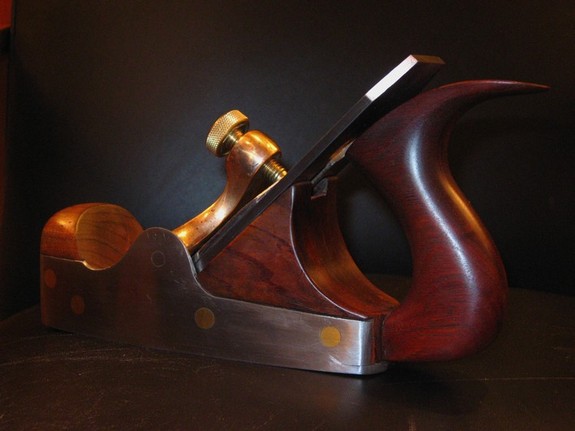custard
Established Member
Here's a piece of Rippled Sycamore, three planes, and a shaving. Which plane made the shaving?

It was the Woden (an inexpensive British Bailey copy from the 1960's) using the original thin iron, but of course it could have been the Holtey or the Norris. Fact is they all get the job done equally well.
I chose Rippled Sycamore because for most UK woodworkers that's the trickiest planing challenge you'll likely face. Rippled Sycamore is, by a country mile, the most common heavily figured timber you'll find in British timber yards. Unless you make a habit of working in Burmese Teak, original growth Indian Rosewood, or you're regularly planing the edges of plywood smooth (or you're working in those insanely tough Ozzy timbers that Derek favours!), then if you can handle this you're all sorted to crack on and actually make something!

It was the Woden (an inexpensive British Bailey copy from the 1960's) using the original thin iron, but of course it could have been the Holtey or the Norris. Fact is they all get the job done equally well.
I chose Rippled Sycamore because for most UK woodworkers that's the trickiest planing challenge you'll likely face. Rippled Sycamore is, by a country mile, the most common heavily figured timber you'll find in British timber yards. Unless you make a habit of working in Burmese Teak, original growth Indian Rosewood, or you're regularly planing the edges of plywood smooth (or you're working in those insanely tough Ozzy timbers that Derek favours!), then if you can handle this you're all sorted to crack on and actually make something!






